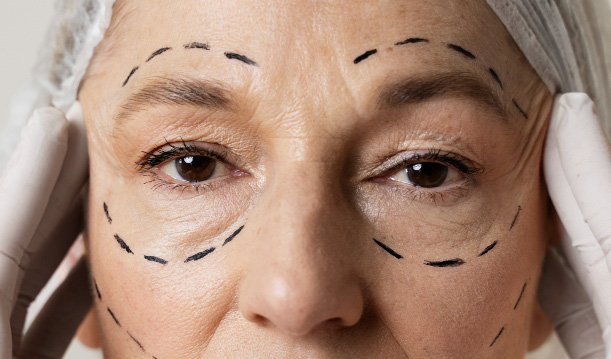Eyes are the window to the soul and if eyes look tired, you look old and tired too. To give a rejuvenated appearance to eyes, there is a process, blepharoplasty or commonly known as eyelid surgery. This procedure not only caters to the old and tired look of the eyelid but also removes excess skin and fat from the upper and lower eyelid, enhancing the ease of functions of the eyes. Dropping eyes may cause hindrance in the vision which can be treated by blepharoplasty.
However, every surgical procedure comes with its side effects and eyelid surgery is no exception. If you are someone considering blepharoplasty, then read through the blog to get knowledge about the potential side effects to make an informed decision.
Common Side Effects
- Swelling and Bruising: Swelling and bruising around the eyes are typical after blepharoplasty. These effects usually peak within the first few days and gradually subside over two to three weeks. Cold compresses and keeping your head elevated can help reduce these symptoms.
- Dry or Watery Eyes: Temporary dryness or excessive tearing is common as your eyes adjust after surgery. Using prescribed eye drops or artificial tears can alleviate discomfort.
- Sensitivity to Light: Increased sensitivity to sunlight and artificial light may occur for a few weeks. Wearing sunglasses and avoiding direct sunlight can help manage this sensitivity.
- Scarring: While the surgeon carefully places incisions in natural creases, minor scarring is possible. Scars usually fade over time and become nearly invisible.
- Temporary Blurred Vision: Blurred or double vision can result from swelling or the effects of ointments used during recovery. This usually resolves within a few days.
Less Common Side Effects
- Infection: Signs of infection, such as redness, warmth, or discharge, require immediate medical attention. Antibiotics are typically prescribed to minimize this risk.
- Asymmetry: Subtle differences in the appearance of the eyes may occur. While most asymmetry resolves during healing, additional touch-ups might be needed in rare cases.
- Difficulty Closing Eyes: Temporary difficulty in closing the eyes fully is common due to swelling. In rare cases, this can persist and may require further correction.
- Hematoma: A hematoma, or blood pooling under the skin, is a rare but serious complication. This requires prompt treatment to prevent further issues.
How to Minimize Risks
- Choose an Experienced Surgeon: Ensure your surgeon is board-certified and experienced in blepharoplasty.
- Follow Post-Operative Care Instructions: Proper wound care, avoiding strenuous activities, and attending follow-up appointments are critical for a safe recovery.
- Avoid Smoking and Alcohol: These can hinder healing and increase complications.
- Use Prescribed Medications: Antibiotics, pain relievers, and eye drops should be taken as directed.
When to Contact Your Surgeon
If you experience severe pain, persistent bleeding, sudden vision changes, or signs of infection, contact your surgeon immediately. Early intervention is crucial to address complications.
Final Thoughts
Blepharoplasty Raleigh is generally a safe procedure with a high satisfaction rate. While side effects are possible, most are temporary and manageable with proper care. By understanding potential risks and working closely with your surgeon, you can achieve the rejuvenated look you desire while ensuring a smooth recovery.

